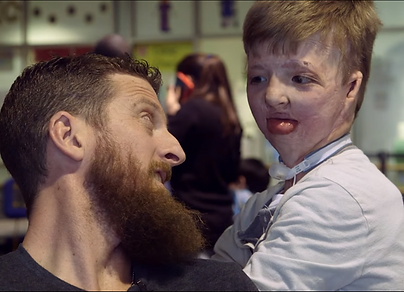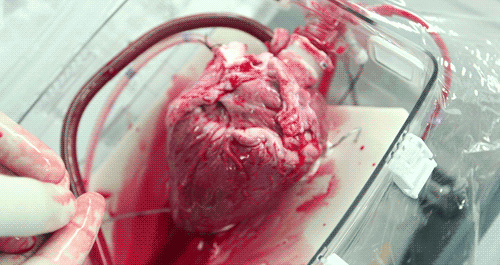
SO WHAT IS TISSUE ENGINEERING ALL ABOUT?
EXPLORE THE LINKS BELOW TO FIND OUT!
What is Tissue Engineering?
This complex and rapidly evolving field explores the creation of living tissues for therapeutic purposes.

Lab-Grown organs like this breathing human lung will drastically reduce the number of tragic deaths of people on organ waiting lists.

Burned on 87% of his body, Mason - and so many other severe burn patients - would be dead right now without tissue engineered skin.

EMERGENCY IN THE OPERATING ROOM: You are a surgeon about to have death on your hands. Your patient has organs that are damaged beyond repair, and your prompt removal of the destroyed tissues has been life-saving. But now what? Your hard-earned skills come to nothing when faced with a patient who is lacking vital organs - as a surgeon, you can only remove; you cannot create. Your patient will die if you are unable to find some way of replacing or reconstructing these vital organs. You race through your options in your mind. What can you possibly do?
One of your options:
Artificial Prosthesis
Prosthesis can be made from artificial materials, and have been able in some cases to successfully meet the distinctive needs of each patient.
However, this solution comes with its own drawbacks: when there is poor compatibiilty between these mechanical systems and the body's internal environment, interactions are dysfunctional and lead to harm.


A more invasive prospect:
Anatomic Reconstruction
Using the patient's own tissues as raw material, the surgeon can attempt to reconstruct the lost anatomic structures.
However, this solution comes with serious drawbacks: using the patient's own tissues can cause serious damage at the donor site. In addition, these new structures are inferior in both their functionality and durablity.
The Riskiest of Them All: Organ Transplants
A patient can be brought back from the brink of death if a living vital organ can be found and transplanted.
However, this solution more than any other comes with profound immunologic complications. Aside from this, patients using organ transplants will always be limited by the supply of organs available.

A CHILLING THOUGHT: CONSIDER A WORLD WITHOUT TISSUE ENGINEERING...

THE NEXT BREAKTHROUGH
TISSUE ENGINEERING
According to the US Department of Health and Human Services, every day, an average of 22 people die because of organ shortages; tissue engineering will one day drastically reduce these tragic waiting-list deaths and many more. Tissue engineering will and has already been able to provide children hope and a new chance at life, and cure adults who previously were thought to be doomed. Such was the case with the invention of antibiotics, and before that with the revolution of the germ theory; medicine is on the brink of its next huge breakthough right now.
Because he was born with spina bifida, Luke Massella's bladder was paralyzed and sending waste back up to his kidneys; without his lab-grown bladder he would have faced a miserable life of dialysis.

This video shows some of the advances that labs have made in tissue engineered organs grown in the lab.
This video offers an animated explanation of what tissue engineering is and how it works.






